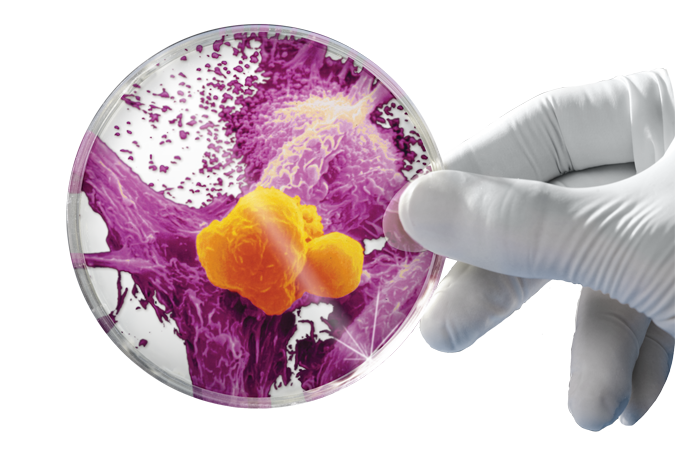
Over the years, researchers have tried many different approaches to turn the immune system against cancer, such as cutting the brakes on immune cells, flagging cancer cells for destruction, or genetically engineering a patient’s immune cells to directly target cancer cells.
Almost all cells in our bodies display samples of the proteins they produce on their surface. But most of these depend on the immune system being able to recognise cancer cells as the true threat that they are. So how does this happen? These small samples, called antigens, act as ‘flags’ for the immune system. When a cell becomes damaged or infected, it changes the proteins it makes, displaying these as new antigens on its surface.
Specialised immune cells, called T-cells, can then spot these antigens, releasing signals that destroy the damaged cell if the antigens aren’t looking the way they should. The DNA faults inside cells that lead to cancer can also change how proteins ‘look’ to the immune system. So, theoretically, once the immune system recognises a cancer specific antigen, it should destroy all cancer cells that carry that flag. But this doesn’t always happen. And researchers have been working hard to find out exactly why. Is recognition enough? “Essentially there are two competing ideas”, says Dr Sergio Quezada, from University College London, and one of the world’s leading experts in how the immune system interacts with cancer.
If immune cells waste precious resources chasing after antigens that aren’t present on the surface of all the cancer cells then they risk missing parts of the tumour entirely – Dr Sergio Quezada “One possibility is that the immune system simply needs to recognise cancer cells. Once it begins breaking open and killing tumour cells a domino effect takes place, allowing the immune system to recognise more and more ‘funny looking’ molecules.
“The other possibility is that the initial antigen that excites the immune system does matter. If immune cells waste precious resources chasing after antigens thataren’t present on the surface of all the cancer cells then they risk missing parts of the tumour entirely.” Developing better immunotherapies is reliant on figuring out which of these ideas is true. But to answer this question would require an enormous amount of data from patients’ tumours.
“One of the reasons why some cancers – lung cancer and melanoma in particular – are so hard to treat is because they evolve so rapidly they quickly outpace the drugs we use to stop them,” he says.
“These cancers have been exposed to many DNA damaging substances – such as cigarette smoke or UV light – and this damage gives rise to many different faults in their DNA.”
[thrive_link color=’blue’ link=’https://www.chipsahospital.org’ target=’_blank’ size=’medium’ align=”]LEARN MORE ABOUT IMMUNOTHERAPY[/thrive_link]

























